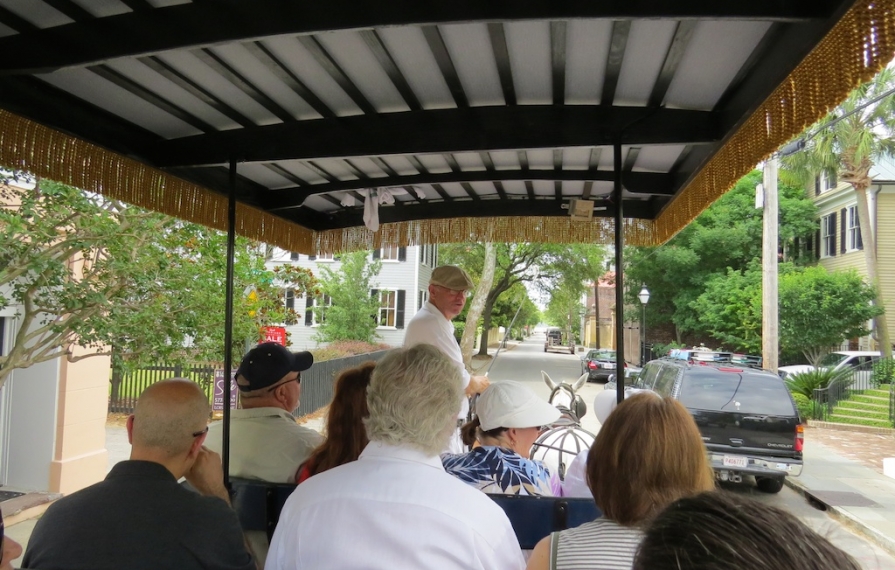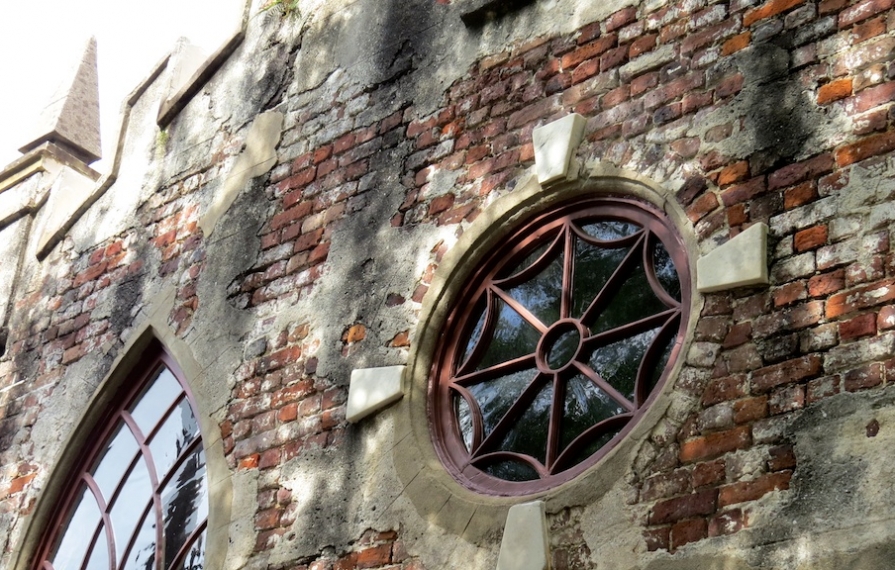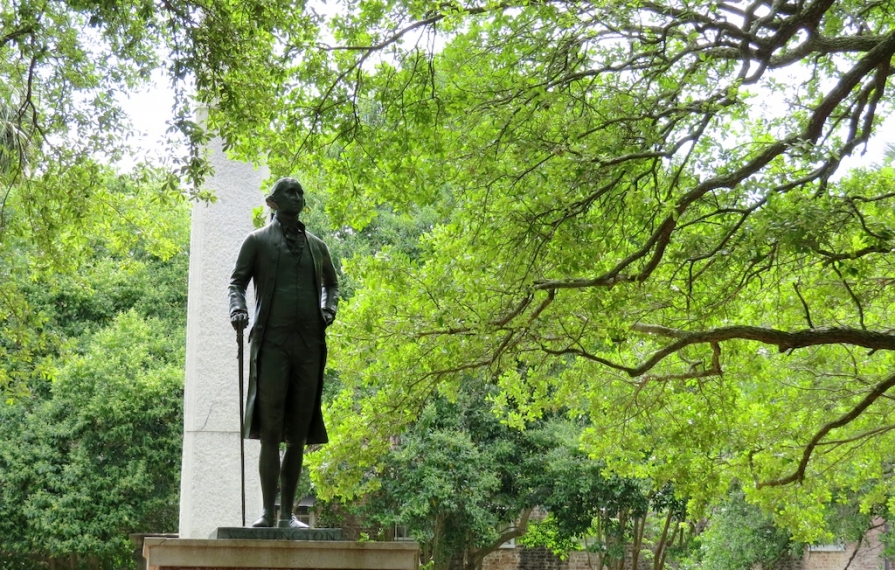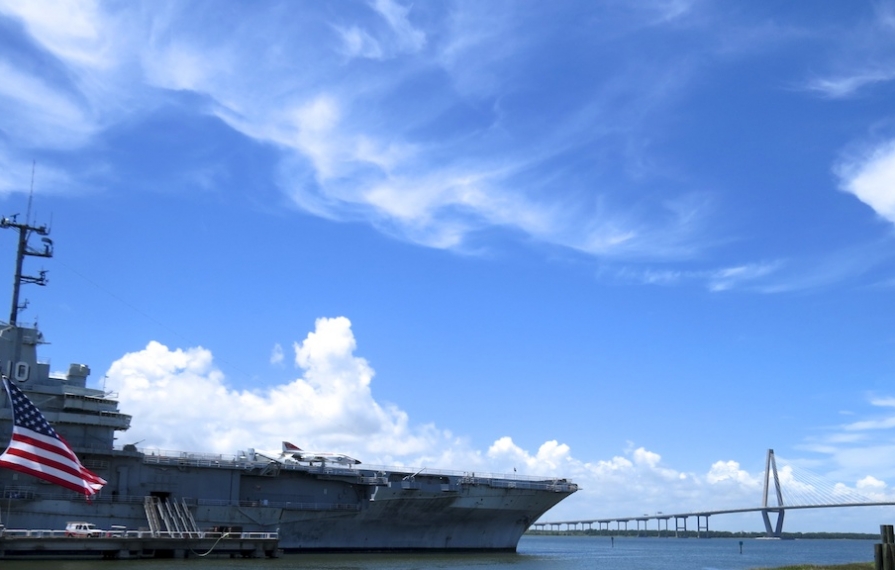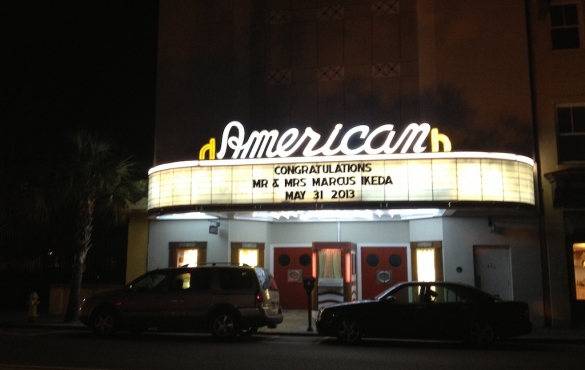
Charleston: Belle of the South
"Charleston and Savannah? They're as different as Vail and Aspen," our former neighbor and transplanted Atlanta Belle, Katie, said over the phone. "And make sure you take a carriage tour, you absolutely must."
So there we were in the fourth and back row of a high horse carriage being pulled by two draft mules, Otis and Battery.
Our driver and narrator, Bill, was a genial narrator whose South Carolinian drawl became more pronounced as he'd raise his voice against passing diesel engined delivery trucks. Later on, when asked, Bill explained that he "just likes talkin'to people." "I'm a victim of downsizing. I used to sell fasteners, then propane products. When the company I worked for merged I was out of a job-- a little too soon for retirement." With an easy smile that encouraged ones back, Bill continued, "so I spent a couple of years to take the test to be a tour guide."
Charleston takes its history very, very seriously, and guides like Bill have to take a rigorous test with a couple hundred of questions, perhaps not on the scale of London cabbies, but certainly far more than you'd expect in other American cities. What's equally fascinating is how the city regulates its horse drawn tour business. With narrow streets that are three hundred years old, mixing cars, carriages, and pedestrians is no easy chore.
As all the tour carriages pull out of the stables in the heart of downtown they stop by a small guard shack building. Outside, is a rusty cage where three colors of lottery balls bounce around. A button is pressed and out pops a red ball. "Route two!" A seemingly distracted woman dressed in a security uniform wanly announces. Bill replies with his name, tour operator number, and the names of the horses. Before we roll forward he explains," To control traffic the city uses a lottery system. You never know which of three routes we're goin'to take. Today we're heading toward the Battery." He hangs a #2 tag from the carriage, and we roll forward to King Street.
We go by the Powder Magazine building - the oldest civic structure in the city. It's small but the walls, we're told, were built thick enough to withstand any explosion, while the roof was thin enough to blow off to dissipate the energy of any blast.
For a few blocks shops and small restaurants go by on both sides of the street, but then, after crossing Broad Street we are now flanked by increasingly larger old homes dating back to the late 1700's and early 1800's. The day's heating up, but the ample shade from centuries old trees and the slight breeze from the nearby harbor keep the ride pleasant.
Occasionally, we see bolted metal stars or crosses on some of the walls which are the telling indicators that the home has been strengthened to withstand an earthquake. In 1886 Charleston was rocked by a 7.0 quake that destroyed many parts of the city. Though not known as a seismically active area, the east coast isn't immune from temblors with the most recent being the quake that shook Washington, D.C. in 2011.
We pass by several churches and Bill points out that Charleston was founded on religious tolerance and, for example, the largest Jewish community in the 19th century grew here. True enough the city fully embraced multiplicity of faiths, but that stood in contrast to Charleston being an economic center that was also highly dependent on slave labor, but that's the subject for others to tell.
The most fascinating architectural detail was the faux stone exteriors of many on the homes. There were no quarries nearby so all the more substantial homes were constructed with brick. Charleston was heavily influenced by cultural tastes in England as many of its residents were either transplants or one generation removed in ancestry. Mirroring the more solid exterior appearance of English buildings in colonial cities to the north and across the Atlantic, a masonry technique was developed to give building fronts the appearance of chiseled stone. The illusion certainly fooled us until Bill revealed this secret. And, sure enough, we would see occasional patches of exteriors where this patina of "enduring permanence" was worn away to expose the plantation made brickwork beneath.
Katie was right. The carriage tour was the perfect way to wade more deeply into the considerable charms of Charleston. And during our tour, we made a note of several of Bill's descriptions and, later that morning, walked back into the neighborhoods for a closer look. There was the church where, in pew #43, visitors could swing the solid wooden half gate open and kneel at the same bar as George Washington had. There were other mansions and homes where you could poke the lens of your camera in to capture the charm of courtyards and covered porches. I've always been drawn to architectural photography subjects and as I reflect on the wondrous couple of hours criss-crossing the tree canopied streets in old Charleston, I'd put it on a very short list of great photo "hunting grounds" right behind San Francisco and Paris.
Then there was the Nathaniel Russell home. Russell became a very prosperous merchant and businessman and, just as tech millionaires of our day do, sunk a lot of money and energy into building a beautiful home. Now let me stipulate to the fact that I'm not an antique-y person. The birth of modernism and Frank Lloyd Wright is about as far back as I care to go. Nonetheless, the home is a stunner. Not for its excessive size (it's big, but not palatial), but for its peg-built, suspended three story oval spiral staircase, circular rooms and breathtaking level of restoration. Imagine "excavating" through 22 layers of paint to get to the original color. Tour guide Bill said, "If there's only one house you have time to tour in Charleston, the Nathaniel Russell house should be the one." Tour guide Bill-- you rock!
When our home tour was over I asked Glenna, our sweet encyclopedic docent, about the transition of the neighborhood. I wasn't at all surprised when she told me that many homes in the neighborhood were in sorry shape in the 1970's. Though her accent placed her from a more northern US region, she had lived here long enough to see run down homes get new lives and the neighborhood become re-gentrified where properties now start selling in the high six figures and continue north into the low millions.
From our home in Denver to other cities we've traveled through, I've seen the same thing occur. It's an interesting and welcomed phenomena. From the 1980's up until the 2008 recession, there was a surge of wealth buildup across the country. And much of this wealth was concentrated into the bank and brokerage accounts of maturing boomers who, tired of the bland safeness of the suburbs, found allure in rediscovering and restoring urban history. It's boutique shops, artisanal dining, and walkable living. It's Priuses in front of century old carriage houses, and baby strollers in parks that, for decades, were neglected and best steered clear of. Fortunately, adding wi-fi is a lot easier than adding indoor plumbing! And the bright work of Charleston's 18th century life is well polished for the 21st.
By now it was lunchtime and while I was ready for a grab and go lunch, it didn't take much persuasion to ease me into the air conditioned elegance of The Magnolia on East Bay street. Being a weekday the interconnected dining rooms were filled with a mixture of sandaled tourists, well turned out middle aged women, and a smattering of business professionals. The formally attired and attentive waitstaff bustled back and forth between the open kitchen that was situated halfway into the restaurant. While the women at the table next to us smiled knowingly when their shrimp and grits entrees arrived, I stuck to my more western tastes and enjoyed a Cobb salad topped with spicy fried chicken slices - a regional take that was quite delicious.
Our tour day continued as we drove across a very new and architecturally elegant double suspension bridge over to Patriot's Point. It's here that the USS Yorktown aircraft carrier now sits as a museum. It's nearly ten stories to get all the way up to the bridge, and the real wonder of the Yorktown is that you can tour large sections of it. Inside the below deck hanger is an impressive collection of vintage fighter planes and on the top deck there are even more. The Yorktown replaced its namesake which sunk in the battle of Midway in the South Pacific. Brought into service in World War II it saw its fair share of combat in the Pacific theater. It was one of the flotilla of ships at the Bikini Atoll hydrogen bomb test, its decks launched Navy fighter pilots over the skies of Vietnam, and it was the recovery ship for Apollo 8.
Unfortunately, our dwindling time budget for the day meant we'd have to come again to tour the adjacent destroyer and submarine as we needed to head back to the Navion for a change of clothes, a little light supper and then drive back into downtown Charleston for an evening of theater.
It's called the Piccolo Spoleto festival. It follows the world renowned Spoleto arts festival. Founded in 1977 the Spoleto festival has grown to become one of the top art, dance, music and theater festivals of the world. And where the main festival attracts worldwide artists, the Piccolo features regional talent. Our choice for the night was the Pure Theater's production of a recent off-Broadway play called "The Elaborate Entrance of Chad Diety."
We'd now made the trip into downtown several times so I was becoming less reliant on "Garmin Girl" to announce turns as the GPS display would adjust to our driving direction. We'd also learned that Charleston takes parking very seriously. It's in limited supply and where there's an open lot, there's an attendant happy to sell you a space for the evening for ten dollars. I quickly found a lot a block from the theater, and the extra time we'd allowed could now be used to spend a little time walking up and down King street.
It was a Friday night. The theater was in a one story commercial building with a glass storefront that must have had many other retail lives. On both sides of the street, there were restaurants and bars with doors and windows open to the outside. The sidewalks bustled with twenty and thirty something couples, and groups of young women walked past in fashions running from stiletto heels and mini skirts to more relaxed sandals and floral sun dresses. Many of the men were in shorts with flip flops or sandals below. This vividly reminded us that soon we'd return home to the same lively summer evenings in downtown Denver.
As we walked back to the theater, through high iron rails and screened by high bushes, we saw a wedding underway in the courtyard of a famed city home. Next to us, a tourist or two angled their camera for a clearer shot through the rails, but I was more taken with the wedding announcement on the old theater marquis next door.
It was open seating in the theater. Several rows of chairs were placed on risers to hold an audience of fifty or so. The set was a real wrestling ring and on each side were wide screens for video projection. It wasn't a full house, but mercifully for the actors, we were an enthusiastic audience. You see, this was a play about all-star wrestling and, as the audience, we were required to boo, cheer, high five and occasionally reply to the actors as they snarled, chair tossed, and body slammed through the evening. It was a surprisingly funny and incisive look inside this so called sport.
The heat of the day had receded by the time we swung the theater doors open to leave and walk back to the car, but there was still plenty of laughter and music bouncing out onto the street, yet not in a boozy, woozy way like New Orleans'Bourbon Street. Charleston, the ever elegant lady, would surely not allow that.
*******************
RV Tips
We stayed at the James Island County Park and used our tow car to drive into downtown (20 minutes). The Park offers a round trip shuttle service for $10 per person.
There is RV parking for the day available at the Charleston Visitor Center at 375 Meeting Street on a first-come first-served basis. For more information call: 800-774-0006
Comments
Comments on this post are moderated, so they will not appear instantly. All relevant questions and helpful notes are welcome! If you have a service inquiry or question related to your RV, please reach out to the customer care team directly using the phone numbers or contact form on this page .
